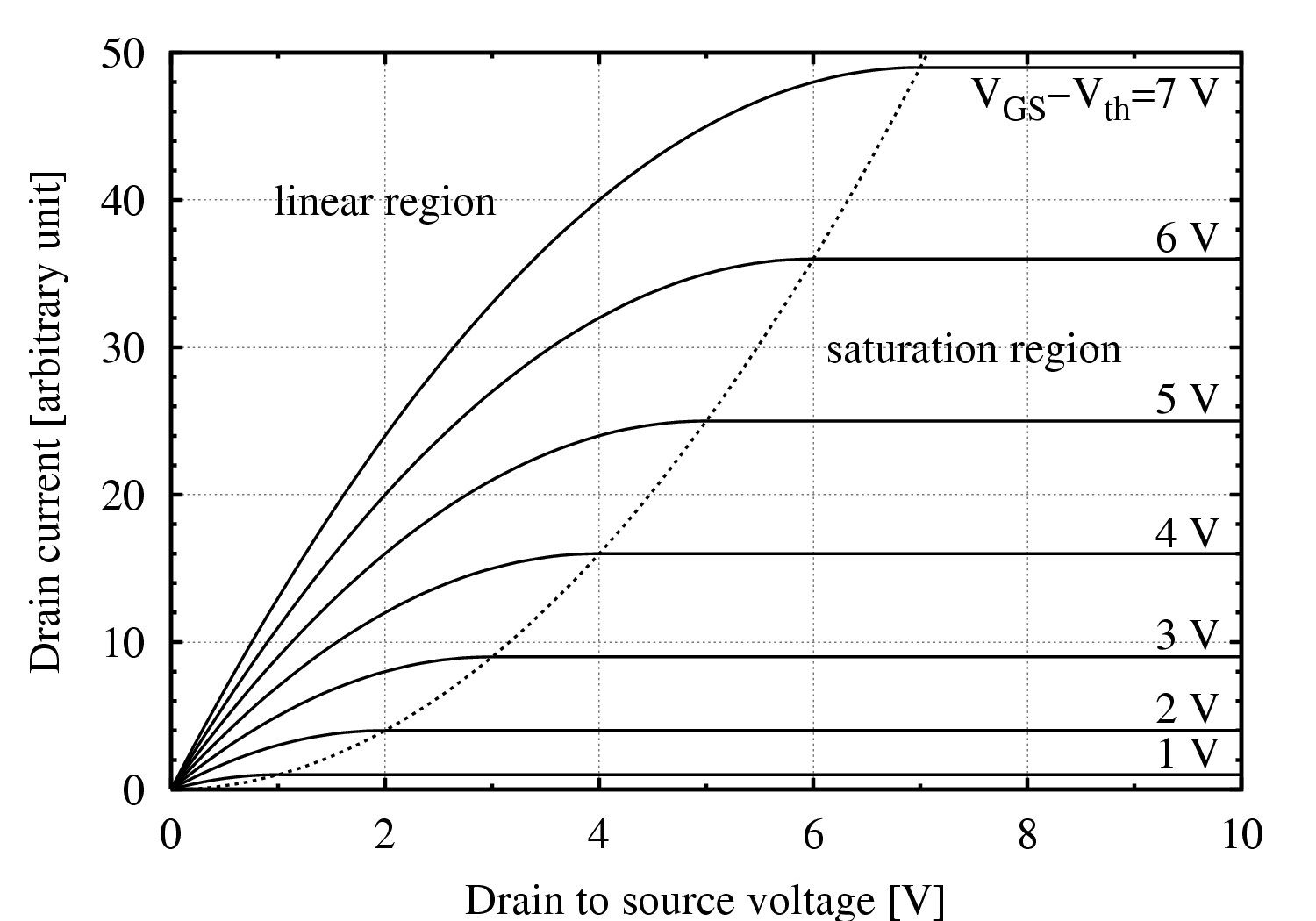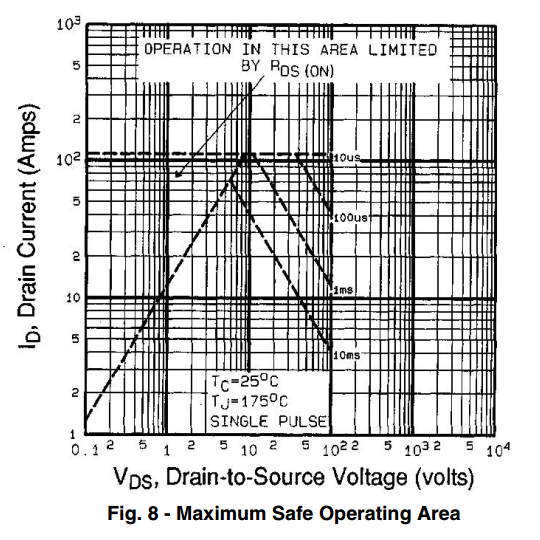-
Component selection, Part 1: MOSFETs
04/13/2017 at 18:28 • 0 commentsThe most important component of this electronic load is the MOSFET. MOSFETs are known for their low resistance and ability to switch current on and off very quickly. However, thanks to the physics of how MOSFETs work, if we adjust the drive voltage applied to the gate, we can put it into a high-resistance "linear-region". In this region, a MOSFET acts as a variable resistor and dissipates a large amount of power, perfect for our electronic load usage.
It's important to pick a MOSFET that can handle high-power dissipation. I originally tried to use an IRF540, but looking at its datasheet, we can see it's not really suited for linear-mode use:
We can use this figure from the datasheet to determine if a MOSFET can handle the load we want to use it for. The downward sloping lines represent the maximum power (volts * amps), for certain length pulses of current, at 25 degrees Celsius. Unfortunately, it only gives us ratings for pulses up to 10ms long, not suitable for DC usage. We can compare it to the datasheet for the IXTH75N10L2, a MOSFET specifically designed for linear-mode use:
Looking at this figure, we can see a line labeled "DC", which means it can handle much longer 'on-times' (though there are still limits). The datasheet states that this MOSFET is specifically designed for linear operation and that it has a "Guaranteed FBSOA", or Forward-Bias Safe Operating Area, at 75 degrees Celsius. This makes it a perfect fit for an electronic load!
However, these features do come at a cost: compared to the price of a single IRF540 ($1, Digikey), these special linear-MOSFETS from IXYS are pricey ($12, Digikey). I managed to get four of these special FETs at a surplus shop for $5 total. This also happens to be the same model of MOSFET used in the Mightywatt project. For my inital prototype, this is the FET I am using. The final design should be able to use any compatible MOSFET, so you can customize the electronic load to what you expect to be testing, allowing for cheaper options to be fitted.
This log gives an overview of one aspect of choosing a MOSFET for an electronic load, but the FBSOA rating of the mosfet is only one variable to look at. Other factors to consider then picking a MOSFET are its voltage ratings (will it breakdown at the voltage you are testing?), its gate drive voltage (is my controller voltage high enough to turn on the FET?), and how to remove the heat dissipated by the device (is my heatsink big enough to do a test without overheating?).
-
Introduction
04/09/2017 at 22:09 • 0 commentsThe main inspiration for this project came from a need to test 18650 cells salvaged from discarded laptop batteries. The desired uses eventually expanded to testing current output limits of various AC adapters, as well as portable USB batteries and USB car chargers.
We can test the capacity of a battery by drawing a specific current and timing how long until the battery is depleted. While it is possible to test batteries by discharging them through a resistor, for example, the current would drop as the battery voltage drops because of Ohm's law. It would be much more convenient if the current draw was constant, independent of the supply voltage.
We can achieve this by adding some more circuitry and creating a feedback loop. A MOSFET is used as a variable resistor, controlled by an op-amp. A reference voltage sets the desired current, while a current shunt/sensor provides feedback. The op-amp uses the feedback to control the MOSFET's resistance. This way, we can stabilize the current draw even if the voltage is changing. The overall design is similar to many other electronic load circuits (see EEVblog, Kerry Wong 1, Kerry Wong 2, Mightwatt).
Low Cost Electronic Load
Designing a low cost electronic load for testing power supplies, batteries, and other devices.


